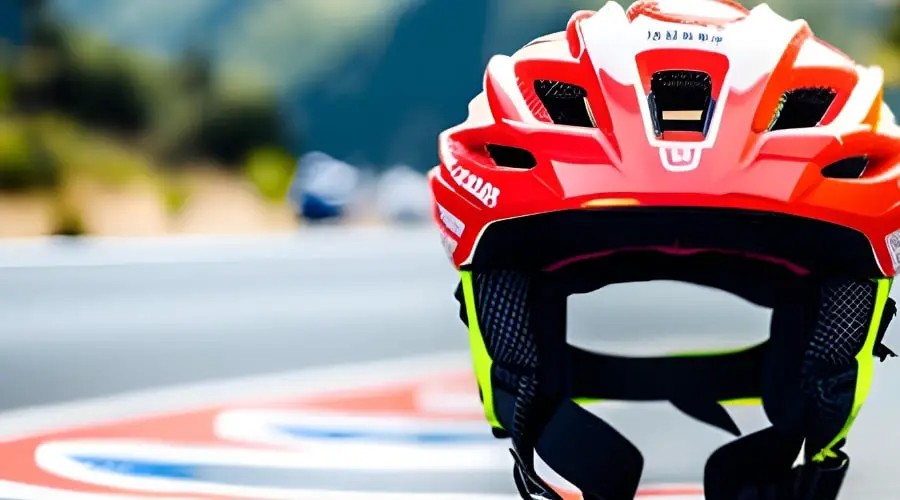An old saying goes, “Better safe than sorry,” and it rings particularly true when it comes to cycling. Whether you’re a casual weekend rider, an urban commuter, or a professional cyclist, the question isn’t just about style, comfort, or aerodynamics. Instead, the burning question is: “What is the world’s safest bike helmet?”
Buckle up, folks; we’re about to embark on a head-first dive into the world of bike helmets.

What is the World’s Safest Bike Helmet?
Truth be told, there isn’t a simple answer. The ‘safety’ of a bike helmet depends on many factors: design, materials, technology, and, importantly, fit. However, let’s break it down a bit further.
The Blueprint of Safety: Design & Materials
The heart of a helmet’s safety lies in its design and materials. The most effective helmets feature an in-mold construction, combining a sturdy polycarbonate outer shell with a shock-absorbing foam liner. This construction is designed to dissipate the impact energy and reduce the force transmitted to your noggin.
Smart Tech: Safety in the Digital Age
Helmet safety isn’t just about physical materials and design anymore. The digital age has brought us smart helmets equipped with sensors that can detect a crash and send out an emergency alert. It’s a brave new world, and technology plays a significant role in shaping the safest bike helmets on the market.
Top Contenders for the Safest Bike Helmet
While safety can be subjective based on various factors, some helmets have consistently ranked high in safety tests. Let’s put the spotlight on these trailblazers.
The MIPS Marvel: Giro Aether MIPS
The Giro Aether MIPS is a frontrunner in the quest for the world’s safest bike helmet. It’s secret? The Multi-directional Impact Protection System (MIPS), which reduces the rotational forces during angled impacts. With an eye for detail and no compromise on comfort, Giro has knocked it out of the park with the Aether MIPS.
The Tech Titan: Specialized S-Works Prevail II with ANGi
Next up, we have the Specialized S-Works Prevail II with ANGi. The ANGi sensor is a crash detector that, when triggered, sends an alert to your emergency contacts with your location. Combine that with MIPS and an ultra-light design, and you have a helmet that’s pushing the boundaries of safety.
How to Pick the Safest Helmet for You?
Safety is paramount, but the world’s safest bike helmet won’t do you much good if it doesn’t fit right or isn’t suited to your riding style. So, how do you go about picking the right helmet?
Size Does Matter
Finding a helmet that fits well is crucial. A helmet that’s too large can shift, reducing its effectiveness, while a helmet that’s too small won’t provide adequate coverage.

The Style Factor
Mountain biking, road biking, and city commuting all require different helmet styles. Choose one that suits your riding style for the best protection.
Related: Should a Helmet be Tight or Loose?
THE BEST SAFEST BIKE HELMET MIPS Outdoor Master
Frequently Asked Questions
1. What is the world’s safest bike helmet?
There’s no one-size-fits-all answer to this, as the safest helmet depends on design, materials, technology, and fit. However, helmets like the Giro Aether MIPS and Specialized S-Works Prevail II with ANGi are often cited as some of the safest due to their advanced features.
2. What role does MIPS play in helmet safety?
MIPS, or the Multi-directional Impact Protection System, is designed to reduce rotational forces that can result from certain impacts. This can significantly enhance a helmet’s safety.
3. Does the weight of a helmet affect its safety?
While lighter helmets can be more comfortable, the weight of a helmet doesn’t directly affect its safety. The key factors are the design, materials, and fit.
4. Are smart helmets safer than traditional ones?
Smart helmets can add an extra layer of safety by including features like crash detection and alerts. However, these features supplement, rather than replace, the fundamental safety aspects of helmet design and construction.
5. How often should I replace my bike helmet?
Bike helmets should be replaced after a significant impact or every 5 years, whichever comes first. Over time, the materials can degrade, reducing the helmet’s effectiveness.
6. Is there a universal standard for bike helmet safety?
While there isn’t a single universal standard, there are several widely recognized safety standards that helmets can be tested against, such as those set by the U.S. Consumer Product Safety Commission (CPSC), the European Committee for Standardization (EN), and the Australian/New Zealand Standards (AS/NZS).
Conclusion
So, what is the world’s safest bike helmet? It’s a complex question, and the answer depends on a number of factors. However, by understanding the basics of helmet safety and keeping your own needs in mind, you can find a helmet that offers optimal protection. Remember, the best helmet for you is one that fits well, is suitable for your riding style, and meets recognized safety standards. And remember, no helmet, no ride!
Helmetslab is a website that focuses on providing in-depth reviews and information about different types of helmets, including motorcycle helmets and others helmets. I am writing a post with proper research on the info that helps helmet users.
